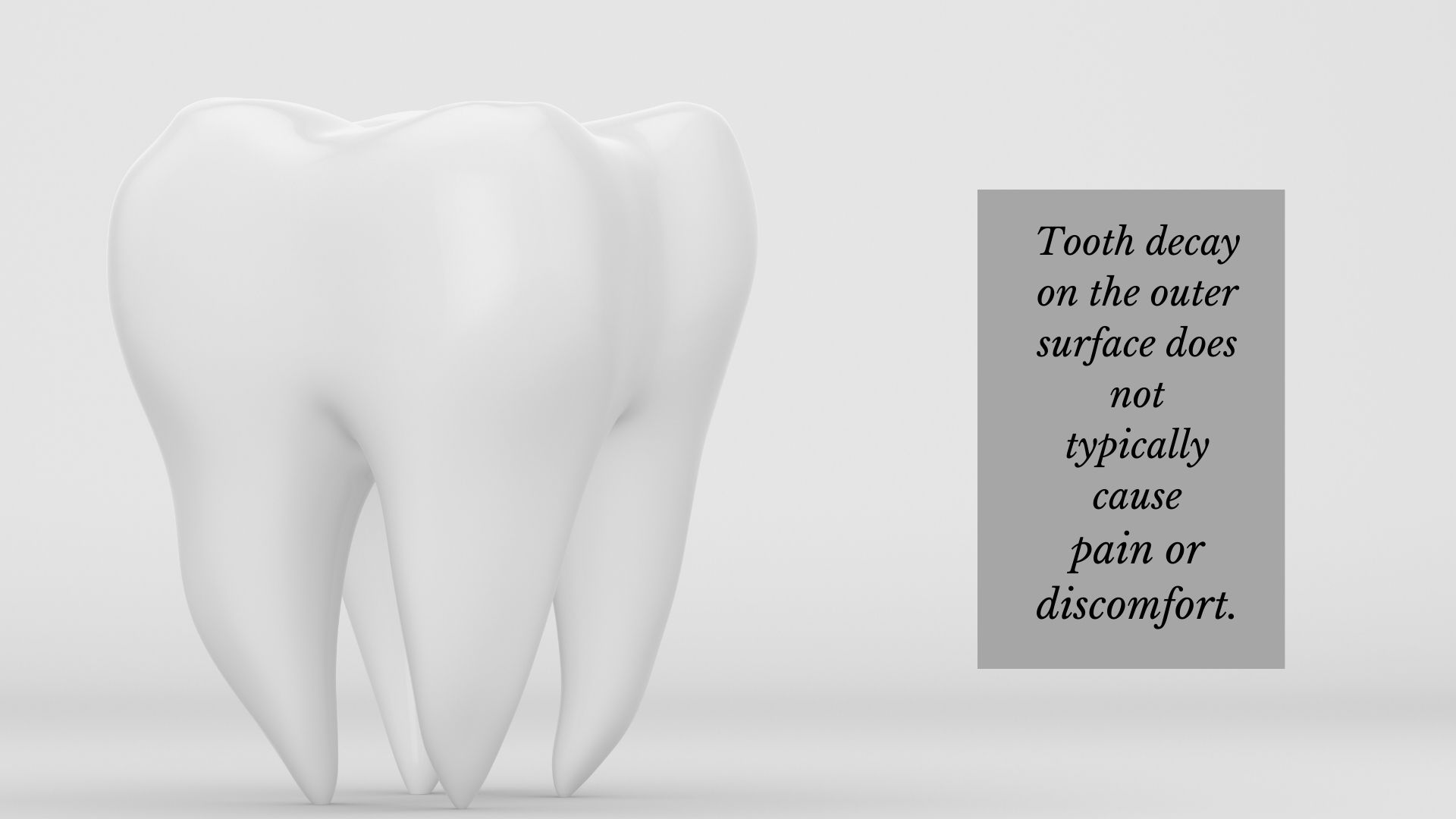If you haven’t been to the dentist lately, tooth decay could be settling in, even if your teeth are not sensitive or causing you discomfort. Knowing what a cavity looks like can help you determine if it’s time to schedule a dentist appointment.
What Is a Cavity?
A cavity is a hole or hollow area in a tooth caused by tooth decay over time. Decay happens when bacteria like food particles get stuck in the tooth. Dental cavities are typically treated by removing the decay from the tooth and filling the space with dental materials.
What Does The Start of a Cavity Look Like?
In its early stages, a cavity may not be visible to the naked eye, but as it progresses, certain changes will become apparent. Here’s what a cavity might look like:
White Spots: In the early stages of tooth decay, white spots may appear on the surface of the tooth. These spots indicate demineralization of the enamel.
Dark Spots: As the decay progresses, the white spots may turn brown or black, indicating further damage to the tooth structure.
Stains: Cavities can sometimes appear as dark stains on the surface of the tooth, indicating areas where the enamel has been compromised.
Pits or Holes: Eventually, the decay may create pits or holes in the affected tooth. These can be visible on the surface of the tooth and may be accompanied by sensitivity or pain.
Visible Breakdown of Tooth Structure: In advanced stages of dental cavities, you may notice a visible breakdown of the tooth structure, with larger holes or craters on the surface.
Signs You May Have a Cavity
Tooth decay on the outer surface does not typically cause pain or discomfort. Patients are more likely to experience symptoms as decay progresses into the nerves of the tooth. Cavity symptoms include:
- Toothache or mouth pain.
- Bleeding gums or other signs of gum disease.
- Facial swelling near the cavity site.
- Tooth sensitivity to hot or cold foods or drinks.
- Bad breath or a bad taste in your mouth.

How Are Cavities Treated?
When a patient has a cavity, the dentist will first take an X-ray to see the extent of the damage. Once the cavity is assessed you will have options for tooth filling material. Most fillings are done with tooth-colored resin to blend in with your natural tooth appearance.
If cavities are not treated promptly, decay can spread into the center of the tooth and infect the pulp. The dentist or endodontist may need to perform a root canal to remove the infected pulp and cap the tooth. In drastic cases, the tooth may need to be pulled altogether.
See a Dentist If You Suspect a Cavity
Unfortunately, cavities will only get worse over time, and even if they are minor at first, they will not go away on their own. Make an appointment with a dentist near you so you can have peace of mind and healthy teeth!


